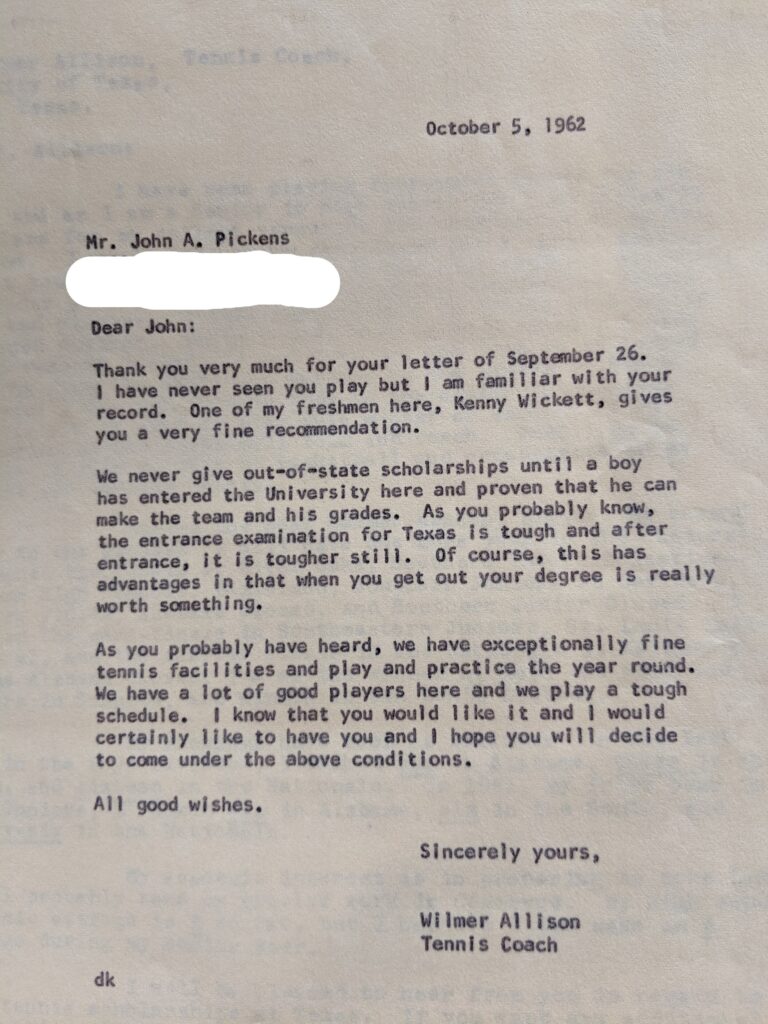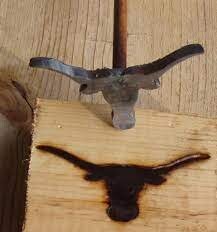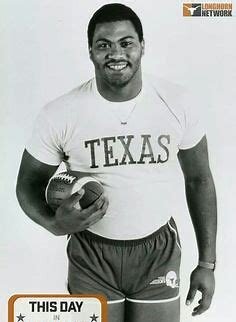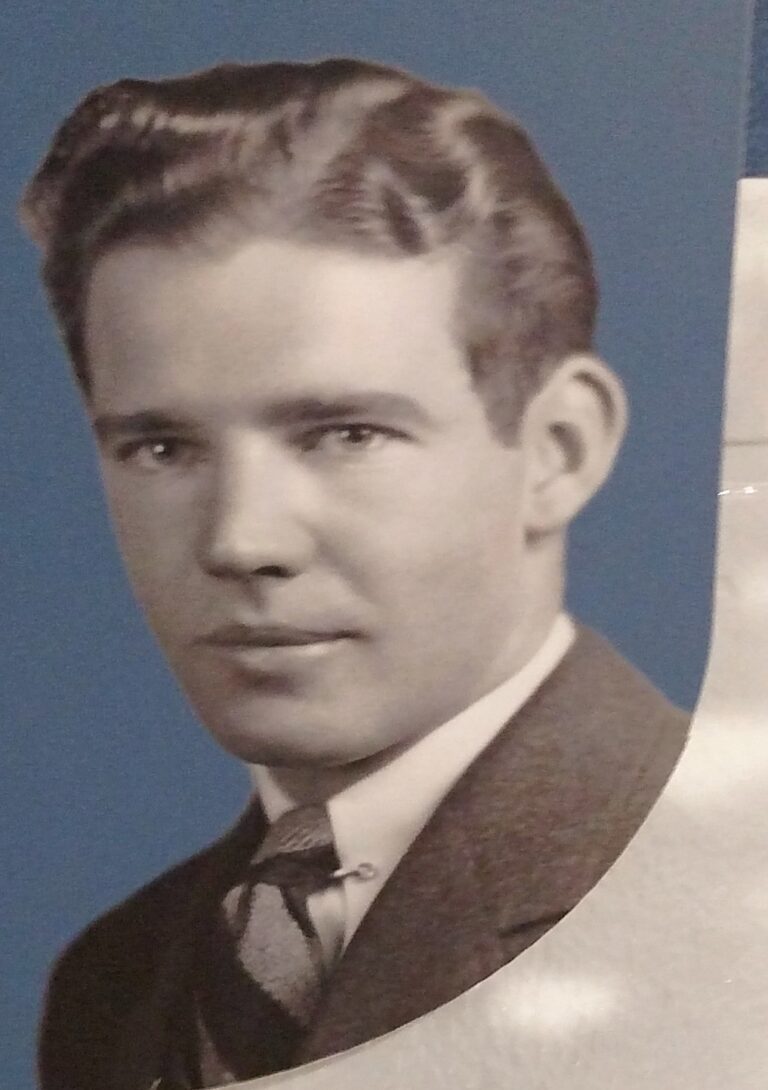Tennis-Stewart Keller’s Longhorn sports lineage- football, diving, and tennis 1
While all Dorothy had to do was follow the yellow brick road, The Longhorns had to follow a confusing Rainbow of brick roads and many false starts that ended nowhere.
It has been said that “what starts here changes the world”. If that is so, Texas created the full spectrum of the color palette for the world searching for the color burnt orange.
The Only Way To Produce The Color “Burnt Orange” Is To Mix Pale Cadmium Yellow, Lemon Yellow, With Cadmium Red, And A Touch Of Burnt Sienna. Any Deviation From This Formula And The Color Is No Longer Burnt Orange.
The road to the perfect color begins in 1893 and ends in the late 1960’s with a color titled “burnt orange”.
The Keller clan lived through all of these color changes and their journey is an important part of Longhorn sports history.
Gold and White – In 1893 UT Students identified themselves with their surroundings on the campus, and several University teams donned gold and white uniforms. Gold and White was never the UT official colors and only lasted a short period of time.
.
By 1895 members of the student-run UT Athletic Association wanted a more masculine color, and orange was paired with white. Unfortunately, white uniforms were difficult to clean after a hard-fought victory, so in 1897, to save cleaning costs, the Athletic Association opted for a maroon color that wouldn’t show dirt as quickly.
For the next ensuing years, UT football, baseball, and track uniforms, along with letter sweaters, were orange and maroon.
This color change created more than a little controversy among the alumni. Adding to the confusion was the Cactus Yearbook, at the time published by the Athletic Association, which listed the University colors as either gold or orange and white. The appearance of the 1899 Cactus made matters worse. The Athletic Association suddenly declared the University colors to be “Gold and Maroon,” which just happened to be the same hues used for the yearbook’s cover. The UT students at the medical branch in Galveston wanted to throw out the double-colors in favor of a single one- royal blue. There is no question that the University of Texas student body was a neurotic mess in 1899 fighting over a rainbow of colors, including shades of yellows, oranges, whites, reds, maroons, and a few in royal blue. The neurosis was so bad that the next year (1900), the Board of Regents decided to hold an election to settle the matter of the official UT colors. Students, faculty, staff, and alumni were all invited to send in their ballots. Out of the 1,111 votes cast, 562 were for orange and white, 310 Orange and maroon, 203 royal blue, ten crimson, 11 royal blue and crimson, and 15 for some other colors.
The story of The Longhorn Keller Clan
I believe that Stewart Keller’s ancestral lineage is the longest in the history of Longhorn sports. For 120 years, the Keller name has been associated with Longhorn sports, with Stewart Keller representing the Longhorn family tree in 2019.
Stewart’s grandfather, Raymond Keller, is in the photo below dressed in the maroon and orange uniform. In 1899 Raymond was one of the first athletes to receive a maroon and orange Longhorn letter sweater.
The second row of photos shows Raymond’s brother, Victor Keller’s, brother on the 1900 football team. (The Cactus misspelled Victor’s last name.)
For 41 years, Raymond’s sweater has been stored in an airtight container at an off-campus storage facility. With the help of employees from the Dolph Briscoe Center for American History, I was able to gain access to Raymond’s letter sweater and take the photo below. I believe this is the only maroon and bright orange letter sweater remaining from that era.
1933-1934 swim team.
In that container was an unexpected bonus!! Under Raymond Keller’s maroon and Orange letter sweater in that airtight container was Stewart’s Uncle’s (also a Raymond Stewart) 1933 diving letter sweater. Raymond was one of the first divers to letter in swimming, and for his recognition, he received a letter sweater.
The Corpus Christi Caller took this photograph for an article published in 1976 for the NCAA tennis tournament. Stewart is with his uncle Raymond Keller who was a diver for the Horns in 1933.
Stewart is bottom row second from right.
.
Stewart was an instrumental part of the Longhorn tennis team in the mid-’70s, winning the SWC for the first time in 11 years. The team finished 5th nationally. Tennis Coach Snyder said it was one of his best teams at UT. The Tennis team had a chance to win the national championship, but the #2 Longhorn went back to South Africa before NCAA’s, and even though Royal offered to fly him back on a private jet if he would play. He did not return. (Curren played #3 on that team, and Denton #6).
In the NCAA’s, Texas had a re-match with a UCLA team they beat earlier in the year. Tied at four-all with UCLA, Texas needed to win the doubles match to advance in the NCAA tournament. Missing Stewart’s South African doubles partner, the Horns lost to UCLA 5-4. UCLA eventually lost to the national champion Stanford team 5-4.
Longhorn sports history is replete with stories like Stewart Keller’s.
TLSN is a free, insightful, educational, and historical website that captures Longhorn sports special moments, UT Sports history, UT traditions, UT legacies, UT culture, individual records, photos, insightful comments, and personal commentary from those who made Longhorn history into a form that all Longhorns can celebrate. Researching this incredible story was a joy for me. Thank you, Stewart, for emailing me and sharing this fascinating family story of Longhorn sports history.
Horns Up!
Billy Dale













